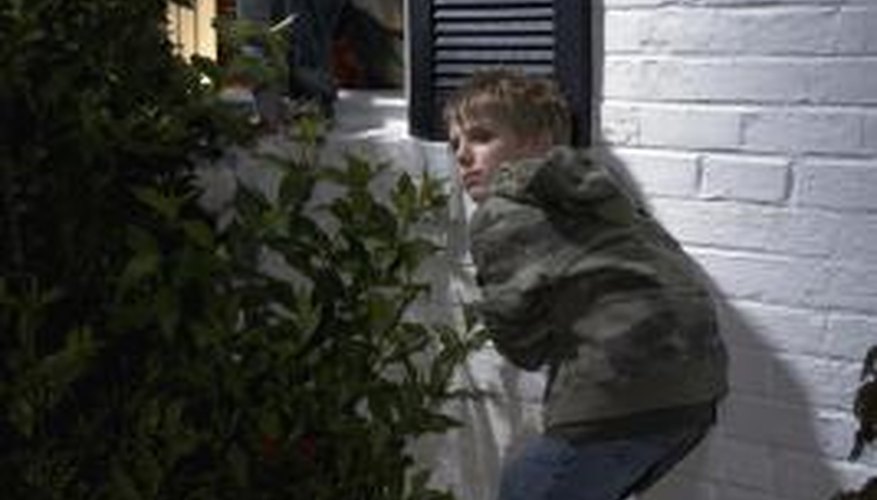Juvenile delinquency includes a variety of offences and crimes. The less serious, such as alcohol consumption, truancy and curfew violations, called status offences, are considered crimes only when committed by juveniles. Infractions, such as traffic offences, may incur additional schooling or fines. Misdemeanours, such as public drunkenness, assault or shoplifting, meet with more serious consequences, including probation, fines, community service hours, detention or a combination of these. Felonies include violent crimes, property crimes and drug offences. Consequences may include detention, probation, work order hours, counselling and fines. Finally, if a juvenile commits a felony, he may be subject to punishment as an adult, depending on his age and the seriousness of the offence.
Causes
Criminologists recognise a variety of causes when examining the roots of juvenile delinquency. Family expectations, especially when parents or other relatives themselves may be under court supervision or incarcerated, impact the behaviour of children. Peers, especially gang members, also influence juvenile actions. Some children may feel labelled as delinquents, and therefore act out as such, a type of self-fulfilling prophecy. Community expectations expand on this thought process by encouraging criminal behaviour in either subtle or overt ways. Economic, social and even cultural factors can further influence delinquent behaviours. The media also occasionally, if not intentionally, promotes violence, which can impact children's actions as well.
- Criminologists recognise a variety of causes when examining the roots of juvenile delinquency.
- Community expectations expand on this thought process by encouraging criminal behaviour in either subtle or overt ways.
Effects
As of 2011, juvenile delinquency costs the U.S. more than £0.6 billion a year, according to educator Cynthia H. Roberts. Juvenile delinquency robs society of some of its brightest and best young people, who choose to pursue a lifestyle of criminal behaviour. Some will become institutionalised and engage in further violent behaviour, costing victims their lives and casting further financial burdens onto society. In turn, the general population may view certain areas of a city, usually urban, as undesirable.
- As of 2011, juvenile delinquency costs the U.S. more than £0.6 billion a year, according to educator Cynthia H. Roberts.
- Juvenile delinquency robs society of some of its brightest and best young people, who choose to pursue a lifestyle of criminal behaviour.
Solutions
Early intervention with the least restrictive but most effective method possible to impact the offender works when attempting to solve the problem of juvenile delinquency. In other words, an 11-year-old juvenile who commits an infraction does not need to be incarcerated with a 17-year-old felon with a history of violent offences. Diversion programs that offer education classes based on the specific offences provide a foundation to address the issue that caused the arrest in the first place. Sometimes, counselling can assist offenders who have substance abuse or mental health issues. Other offenders benefit from probation and close supervision in the community. According to the Center on Juvenile and Criminal Justice, incarceration should be reserved for the most violent juvenile offenders only when absolutely necessary for the safety of society.
- Early intervention with the least restrictive but most effective method possible to impact the offender works when attempting to solve the problem of juvenile delinquency.
Statistics
According to the U.S. Department of Justice Office of Justice Programs, in 2008 law enforcement agencies arrested slightly over two million juveniles under the age of 18, while the Center on Juvenile and Criminal Justice reported that California led the nation in both juvenile arrests and incarceration rates in 2006, with close to 17,000 young people in custody. Florida, second in the nation in incarceration rates, detained just over 8,000 juveniles. Minorities represented a disproportionate number of these populations.
